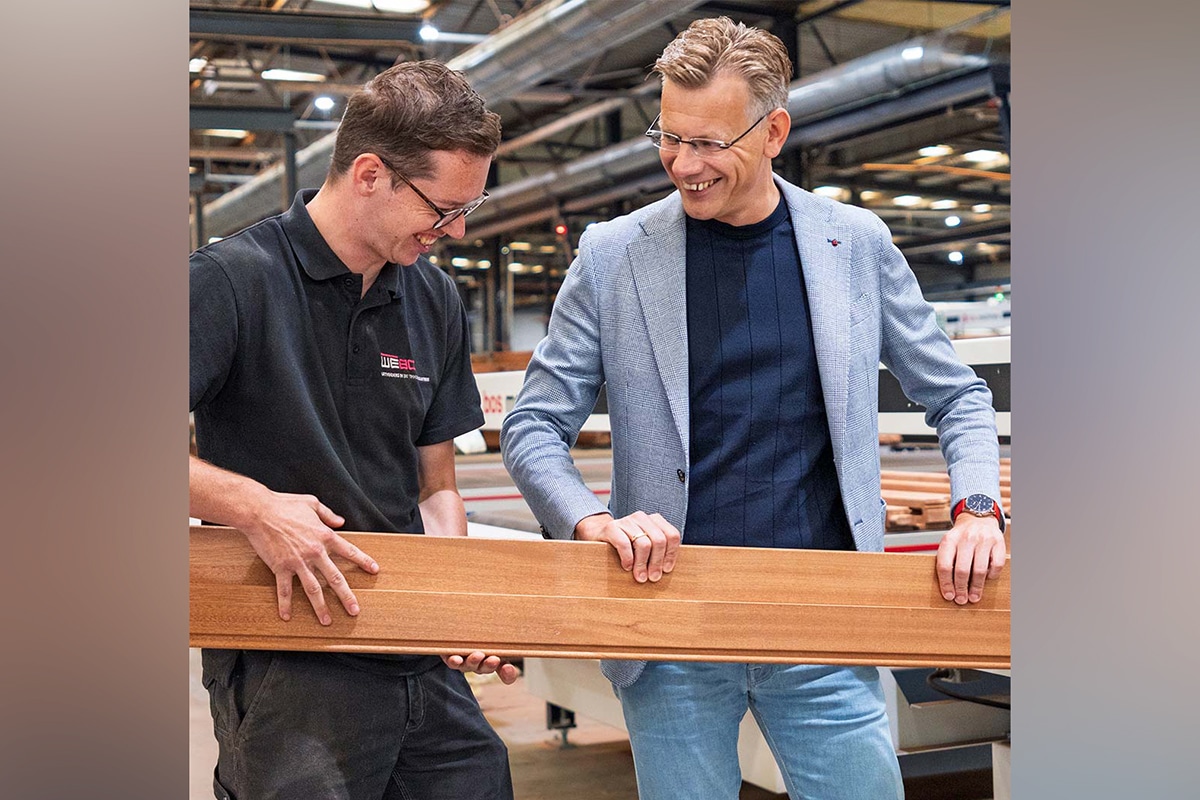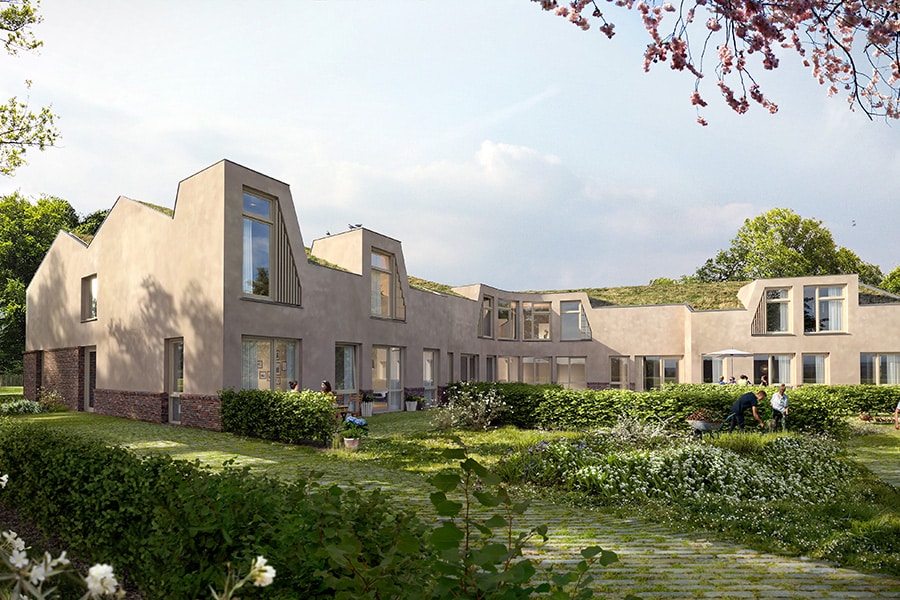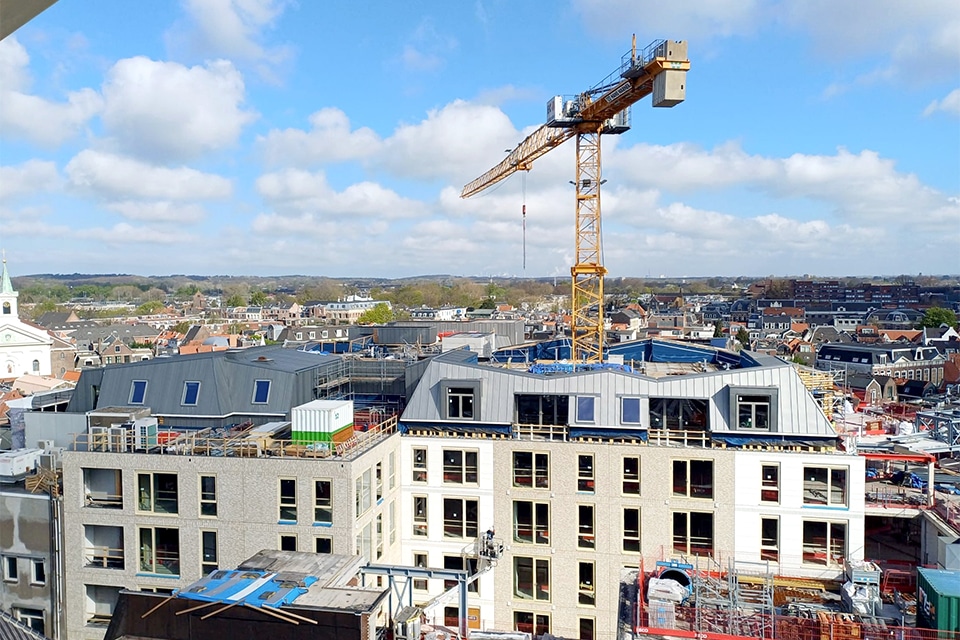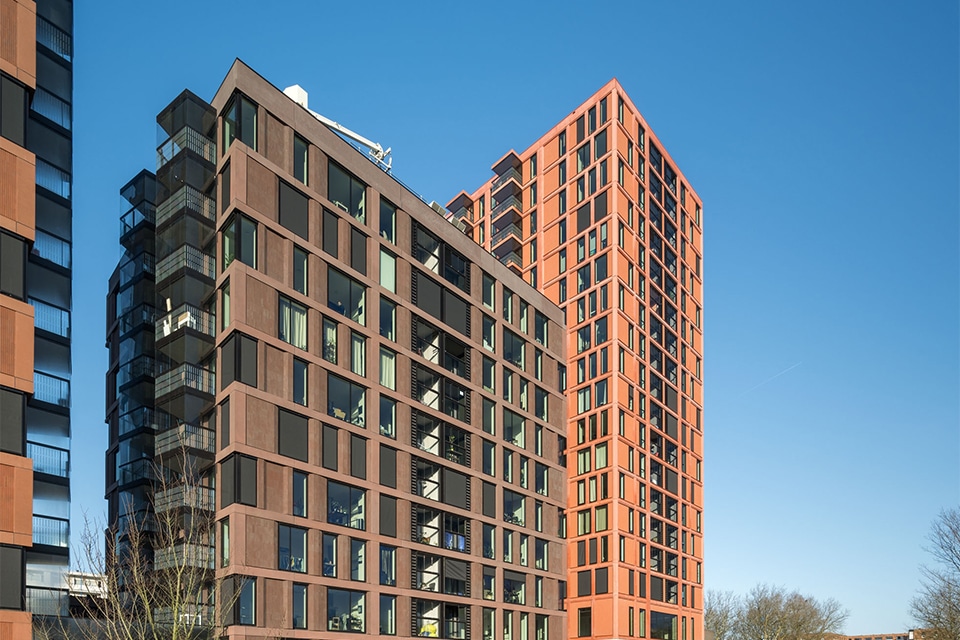
Circular icon of Fryslân
Commissioned by the Province of Fryslân, Bouwgroep Dijkstra Draisma started the construction of It Swettehûs, Fryslân's circular icon, in late 2020. This power station will be located in Leeuwarden and will be used to remotely operate 40 Frisian bridges. In addition to a workplace for approximately 20 bridge operators, the new building and grounds will soon become the operating base for provincial waterway management employees, nautical affairs and the technical service for bridge and lock maintenance.

Basically, the building serves to operate more than 40 Frisian bridges remotely. However, It Swettehûs, near an access road to Leeuwarden, has also been given a port. Heerke Osinga, project manager of Bouwgroep Dijkstra Draisma: "It will be the operating base for the technical service and is a place where boats are maintained. Other personnel of the province can also work here and avoid the hustle and bustle of the city."

Important milestone almost reached
"We are now in the process of winding down," Osinga said. "Since December 1, four people have already been working in the Swettehûs." The bridge operation is located on the top floor of the building, which almost seems to float due to the glass facades that characterize the floor below. "This 'box' is characterized by the wooden slats. These define the structure, but are also applied to the ceiling and run from inside to outside." Since the first bridge operators have been working, the rest of the building is being completed.
Construction group Dijkstra Draisma has been working on It Swettehûs since July 9, 2019. Together with a team consisting of GEAR architects, Sweco, ITBB, de Waard and Donkergroen. A building as circular as possible was the goal. "In the design phase, this was quite tricky. Which materials are you going to use and are they also sufficiently available?" So the construction group hired a materials scout, who identified which materials were suitable and available. "The main ingredient is wood. We used the tropical hardwood species Basralocus. We reuse pulled mooring posts in the building. Both at length to form the structure with and as planks on the facade and inside the building." In addition, It Swettehûs is being built so that the building can be disassembled again.


Sustainability
Sustainability also plays a very important role in the construction of It Swettehûs. Energy is generated by 1,000 solar panels placed on roofs, as well as on a ground wall along the canal. "For the construction of the harbor, sheet pile walls are reused from a previous provincial project," Osinga explains. "Pipes have been placed on the sheet pile walls that will extract thermal energy from the soil and surface water. This will provide cooling in the summer and heating in the winter. This is a first for Fryslân."

Energy-efficient smarts
The project has some other energy-efficient cleverness, such as a parking lot with chargers for electric vehicles powered by solar panels. In addition, the workshop of It Swettehûs is clad with reused refrigerated cell panels. These panels came from a large cold storage facility in the Randstad. The panels provide an industrial look on the inside. The outside is covered with a profiled sheet. "These materials comply very well with the insulation values we needed to achieve," says Dr. K. K., who is a member of the team.
Circular tension field
Meanwhile, the first bridge attendants are at work in It Swettehûs. The finishing work is in full swing. Noorman Bouw- en milieu-advies is involved as a consultant in this project, which is special in part because reused materials were used for 40%.
Managing director and owner Tineke Noorman explains that Noorman Construction and Environmental Advice puts thinking along with you at its core. "Among other things, we give advice on building physics and fire safety. Here we look at whether the choices made fit within the regulations. If it turns out that this is not yet the case, we think along with you about a solution."
The Frisian project created a field of tension because at least 40% of the materials had to be circular. "This is challenging, because in terms of building physics it must be demonstrable that parts of the construction comply. This involves fire resistance, but also, for example, sound insulation." Noorman says that the circularity idea and increasingly belabeling and certification are difficult to combine. "We have to think about this, because it is not desirable for one to get in the way of the other." In It Swettehûs, part of the structure was made of steel anyway. "In addition, the company has one central stairwell. This was to be made of wood, but because of fire resistance, concrete was chosen after all."
Dutch Wood in It Swettehûs
A special building deserves a special floor. For the Frisian showpiece It Swettehûs, the floor was provided by Doetinchem Parket.
Owner Chris de Vries: "Construction group Dijkstra Draisma contacted us. She asked if we could help her with a used parquet floor. On this number of m2, however, this was a very tricky business." Fortunately, Doetinchem Parket had a durable asset: "We supply the Bruynzeel Hollands Hout floor. This floor is made in cooperation with the Forestry Commission and consists of wood from Dutch oak trees that are selectively harvested."
The floor was entirely in keeping with the sustainability philosophy of the Friesian project. "This is the first larger project done with Hollands Hout. A total of about 315 m2 of parquet was laid on the first and second floors. The finish of the floor was done with linseed oil of Dutch origin, made by Rigo Verffabriek."
Last year, Doetinchem Parket took over the operations and employees of Bruynzeel Flooring. "We still have ample stock, but we also have the cooperation to produce new Dutch Wood." De Vries concludes, "We are very happy with the cooperation during this project, we came to a very nice tidy construction. That is far from the case everywhere!"



